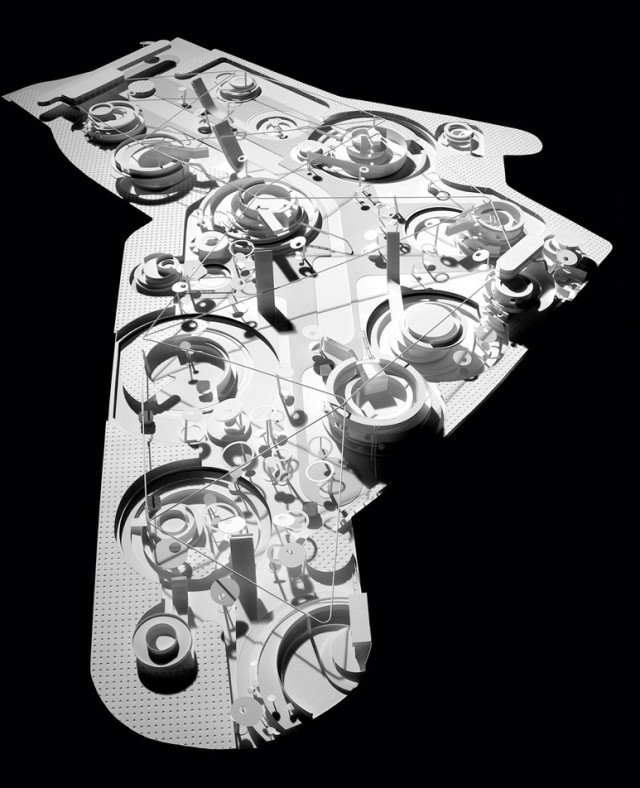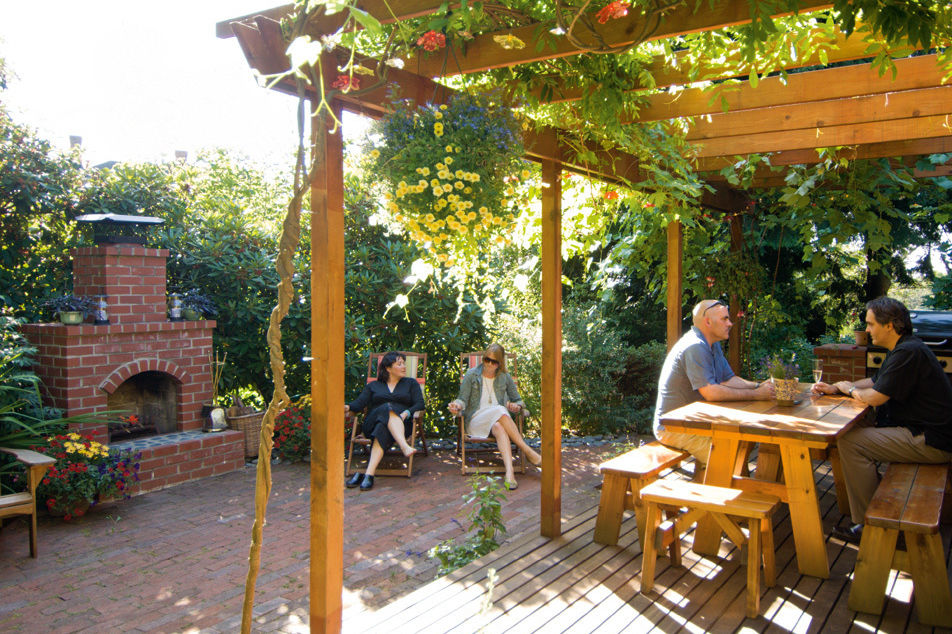China Futures

A decade ago, Foreign Affairs magazine asked, “Does China matter?” Last summer’s opening ceremony in Beijing for the 2008 Olympic Games offered a beautiful and awe-inspiring answer: “Yes.” China Design Now, a traveling exhibition opening October 10 at the Portland Art Museum, offers a look at the many reasons why. Packed with art and architecture (including this model of the Guangming Smart City), the show looks at the innovative social and economic development of three Chinese cities—Beijing, Shanghai, and Shenzhen. Specially curated by local design firm Ziba, the exhibit is merely the center of a wider, monthlong look at contemporary China, from avant-garde music and dance to fashion and youth culture.
Patterning Milwaukie
No architect has a bigger cult following in Oregon than Christopher Alexander. Mathematician, designer, and mystic, his seminal 1977 book A Pattern Language offered careful prescriptions for how history and community should shape new buildings. A generation of Oregon urban planners uses it like a bible. For instance, Portland’s zoning code, written in the 1990s by Michael Harrison, a former Alexander student, is pure Pattern Language doctrine.
Kenny Asher, Milwaukie’s community development and public works director, is another Alexanderite. But rather than merely divine the master’s ways, Asher went to the wizard himself to develop a concept for Milwaukie’s south downtown area. “Alexander was the cat’s meow to me,” says the University of Oregon architecture grad. “When I took this job, I could finally talk [to him] peer to peer.”
Asher says the Berkeley, California, office of Alexander’s firm, the Center for Environmental Structure, has done the major work on the South Downtown Concept Plan. But Alexander, who now lives in London, did visit once. Asher says a town square plan is emerging based on Alexander’s conjuring of Milwaukie’s patterns. The square will be surrounded by narrow lanes and new development that will be “dense with community life,” but, he cautions, “not with tall buildings.”
“We think it will be an interesting new model,” Asher says, “not just for Milwaukie, but for the entire region.”
Northern Migration
“Blue is the new green” was the slogan worn for months by the small-is-beautiful Cyan condominiums sales center on SW Fourth Avenue and Mill Street. But the building has shifted from condos to apartments, and the center is about to need a new tag. Our nominees: “NoPo is even greener,” or “North Williams or bust.”
Retail developing wiz Jon Kellogg scooped up the wood-and-glass sales center (designed by Thomas Hacker Architects) and dismantled it completely: curtain wall, columns, and even 22 white birch trees. Soon, he will re-erect it in his growing empire at N Williams Avenue and Shaver Street (see “The New Power Center” in the Summer 2009 issue of Spaces). To this already thriving foodie enclave (Pix Patisserie, Lincoln Restaurant, and Eat), Kellogg will add an oasis for the 6,000-plus cyclists who ride by daily: the United Bicycle Institute, an Ashland-based school for custom frame-building and design that serves more than 500 students yearly, will move into an existing building on the site. For the former sales center, Kellogg is looking for a retailer willing to specialize in Oregon-made bikes. Meantime, he’s signed stylish bag and wallet maker Queen Bee Creations for a 3,400-foot factory and retail store at this thriving center of Portland indie culture.
Mercy Corps’ Design³
Mercy Corps opens its new $37 million headquarters on October 9 with a trifecta for Portland’s activist and design communities: a landmark restoration/expansion by Thomas Hacker Architects; a 4,700-square-foot interactive Mercy Corps Action Center by renowned New York exhibit designer Ed Schlossberg; and Design for the Other 90 Percent, a traveling exhibition from the Cooper-Hewitt Museum in New York.
In designing Mercy Corps’ headquarters, Hacker’s team not only gave the Skidmore Building and the adjacent Ankeny Plaza new life, but anchored the west end of the Burnside Bridge with a new landmark. The Action Center will educate the public on global health and economic development issues through the kinds of dynamic interactive experiences Schlossberg pioneered in such projects as the Sony Wonder Technology Lab in New York City (wondertechlab.sony.com). And the Cooper-Hewitt show offers a glimpse at the extraordinary leaps in everything from housing to water purification, courtesy of just a little well-placed design.
Schlossberg will also speak at a special Portland Spaces Bright Lights city design discussion presented at the Mercy Corps Action Center.




